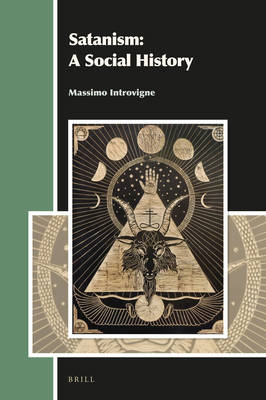
- Afhalen na 1 uur in een winkel met voorraad
- Gratis thuislevering in België vanaf € 30
- Ruim aanbod met 7 miljoen producten
- Afhalen na 1 uur in een winkel met voorraad
- Gratis thuislevering in België vanaf € 30
- Ruim aanbod met 7 miljoen producten
Zoeken
€ 409,45
+ 818 punten
Omschrijving
A 17th-century French haberdasher invented the Black Mass. An 18th-century English Cabinet Minister administered the Eucharist to a baboon. High-ranking Catholic authorities in the 19th century believed that Satan appeared in Masonic lodges in the shape of a crocodile and played the piano there. A well-known scientist from the 20th century established a cult of the Antichrist and exploded in a laboratory experiment. Three Italian girls in 2000 sacrificed a nun to the Devil. A Black Metal band honored Satan in Krakow, Poland, in 2004 by exhibiting on stage 120 decapitated sheep heads. Some of these stories, as absurd as they might sound, were real. Others, which might appear to be equally well reported, are false. But even false stories have generated real societal reactions. For the first time, Massimo Introvigne proposes a general social history of Satanism and anti-Satanism, from the French Court of Louis XIV to the Satanic scares of the late 20th century, satanic themes in Black Metal music, the Church of Satan, and beyond.
Specificaties
Betrokkenen
- Auteur(s):
- Uitgeverij:
Inhoud
- Aantal bladzijden:
- 668
- Taal:
- Engels
- Reeks:
- Reeksnummer:
- nr. 21
Eigenschappen
- Productcode (EAN):
- 9789004288287
- Verschijningsdatum:
- 29/09/2016
- Uitvoering:
- Hardcover
- Formaat:
- Genaaid
- Afmetingen:
- 157 mm x 236 mm
- Gewicht:
- 1043 g

Alleen bij Standaard Boekhandel
+ 818 punten op je klantenkaart van Standaard Boekhandel
Beoordelingen
We publiceren alleen reviews die voldoen aan de voorwaarden voor reviews. Bekijk onze voorwaarden voor reviews.








